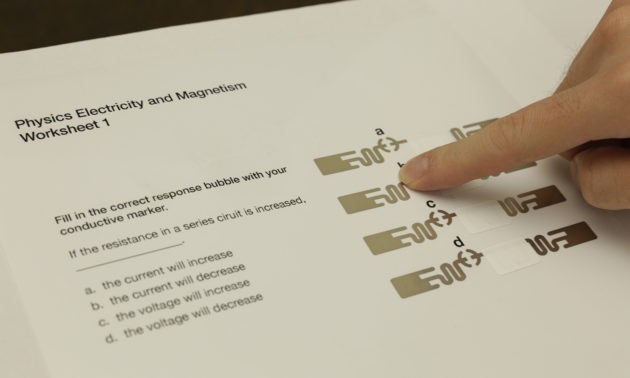Disney has teamed up with the University of Washington (UW) researchers to develop radio frequency tags that turn regular pieces of paper into Internet of Things (IoT) devices. The smart paper contains small stickers with sensors that provide web connectivity. Applications of the new invention could include magic wands that are used to change the music tunes in the room of a smart home.
Disney Research, UW computer science/engineering doctorate students, and Carnegie Mellon University researchers joined forces. They attached battery-free radio frequency identification (RTID) tags onto small pieces of paper.
The sensor tags then talk with a reader device located in the room, which detects perform commands and interpret gestures. They could be used for basic actions including covering and swiping. This system works by figuring out how a signal is disrupted by recognizing actions as commands, according to GizMag.
The PaperID project's team hopes that the smart paper could be used for various applications. For example, digital connections could be added to items by sticking or drawing small RFID antennas onto them, according to The Seattle Times.
Printers could also be used to make the smart paper. This would be done by using a nanoparticle ink contained in the computer accessory.
The new technology could be used for many complex applications. For example, it could be added to an on/off switch by putting a group of tags in a circular pattern that forms an adjustable knob.
Hanchuan Li is a UW graduate student and was the lead author. He explained that paper is one of the most common mediums, and RFID tags could make interfaces as basic, cheap, and flexible as paper. The tags are about 10 cents each.
In addition, researcher Alanson Sample explained that PaperID tech could also be used for several materials and applications. That is because the low-cost interfaces can connect the real and virtual worlds.
UW presented its research on May 12, Thursday at the Association for Computing Machinery conference. That is taking place in San Jose, California.
Here is a video showing how PaperID technology works and some real world uses:



























